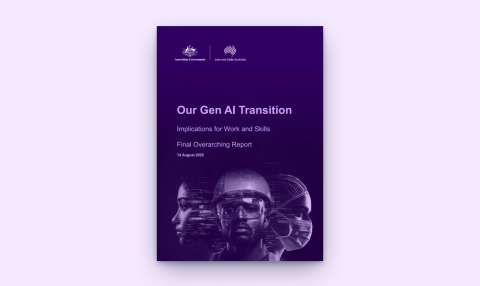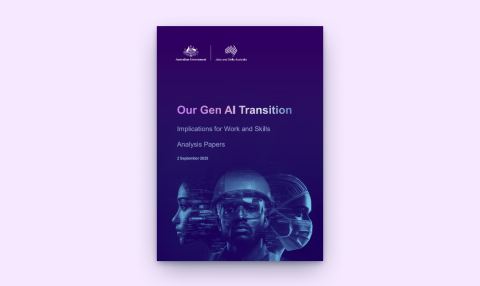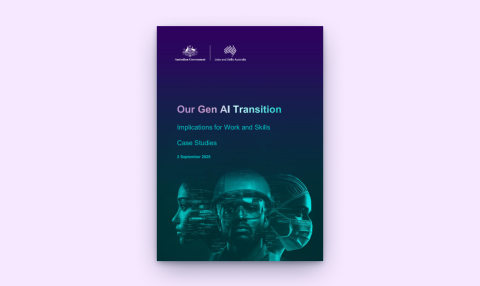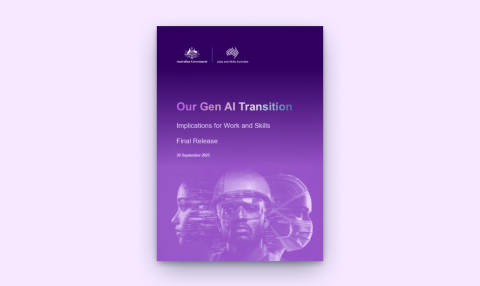On this page
Jobs and Skills Australia’s (JSA) Gen AI Capacity Study is the first national, whole-of-labour-market study focused on the potential opportunities and challenges of Gen AI for Australia’s workforce.
The Study finds that Gen AI is more likely to augment human work than replace it. While AI may automate routine tasks, its greatest potential lies in enhancing productivity, reshaping how we work, and unlocking new opportunities economy wide. The Study provides options for labour market actors to navigate a digital and AI Transition over the medium term.
The study
The Overarching Report (14 August 2025), Analysis Papers and Case Studies (2 September 2025) provide detailed evidence and recommendations on Australia's experiences, opportunities and challenges with Gen AI and the implications for policy. The Study’s analysis cuts across five themes – exposure, adoption, adaptation, labour market dynamism and skills.
The Study’s final release (30 September 2025) includes more case studies and non-market, cohort analysis and technical matters.
The third and final release from this study (30 September 2025) includes non-market, cohort & intersectional analysis, as well as any technical matters. Our final Case Studies will also be included, with a focus on adoption and hybrid co-design in the non-market sector.
Explore the analysis
Data table and downloads
Our analysis considers all parts of the labour market and what working with technology might mean across different occupations, industries and skills system parts. Explore our Australia-first analysis below.
Interact with data
Download
Download all the detailed data behind our Gen AI Study. The Detailed Data Release supersedes all Headline Data Release items.
JSA Gen AI Capacity Study AP Publication Chart Data.xlsx
JSA Gen AI Capacity Study AP Publication Chart Data 20250930.xlsx11513929
DownloadFrom Commissioner Barney Glover
Public Engagement
The Study has engaged with over 150 stakeholders and participants to whom we are extremely grateful for their generous contributions to this landmark study. This study's consultation hub was open from March until May 2025 to seek responses to a list of key questions. Thank you to all who made a submission.
AI Capacity Study - Public Engagement List.docx
ai_capacity_study_-_public_engagement_list.docx43275
DownloadContact
For assistance, please email: AICapacityStudy@jobsandskills.gov.au












